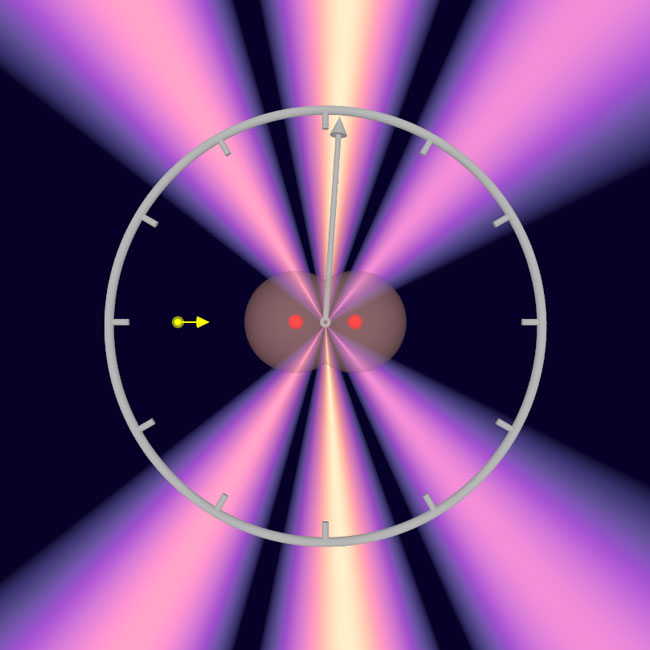For the first time, researchers have measured a process that occurs in mere zeptoseconds, or trillionths of a billionth of a second (10-21 seconds). The process is the transit of a light particle, or photon, across the two atoms that compose a hydrogen molecule. The travel time of the photon was revealed through the fundamental light-matter interaction known as photoionization, which occurs when a light particle adds energy to an atom and causes the ejection of one or more electrons. In the new research, the measured time interval between the ejection of an electron from the first atom and the second atom in the molecule was 247 zeptoseconds on average. The study's approach could be used to learn more about photoionization and other ultrafast reactions. See also: Atom; Atomic structure and spectra; Electron; Energy; Hydrogen; Molecule; Photon

The researchers relied on an electron interferometric technique to achieve their results. This technique is based on the quantum mechanical principle of wave-particle duality, in which particles also act as waves. When the photon triggers the ejection of an electron from each hydrogen atom, those electrons generate waves that interfere with each other. The interference pattern that is generated indicates the time delay between the first electron's emission and the second electron's emission. The delay occurs because of the finite speed of light, the physics involved in the transfer of electromagnetic energy from a photon to an electron, and the electron's subsequent ejection from its shell in orbit around an atom's nucleus. See also: Electron configuration; Interferometry; Light; Quantum mechanics; Speed; Wave-particle duality
The study opens up a new realm of physics at the zeptosecond scale. Researchers have continued to refine experimental techniques to observe ever faster phenomena occurring on scales from nanoseconds (billionths of a second, or 10-9 seconds) to picoseconds (10-12), and on into femtoseconds (10-15 second) and attoseconds (10-18).





